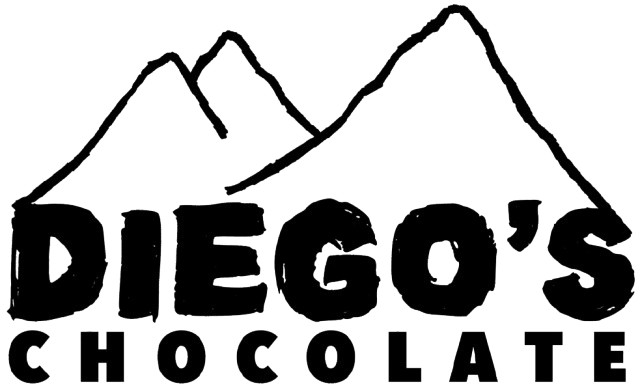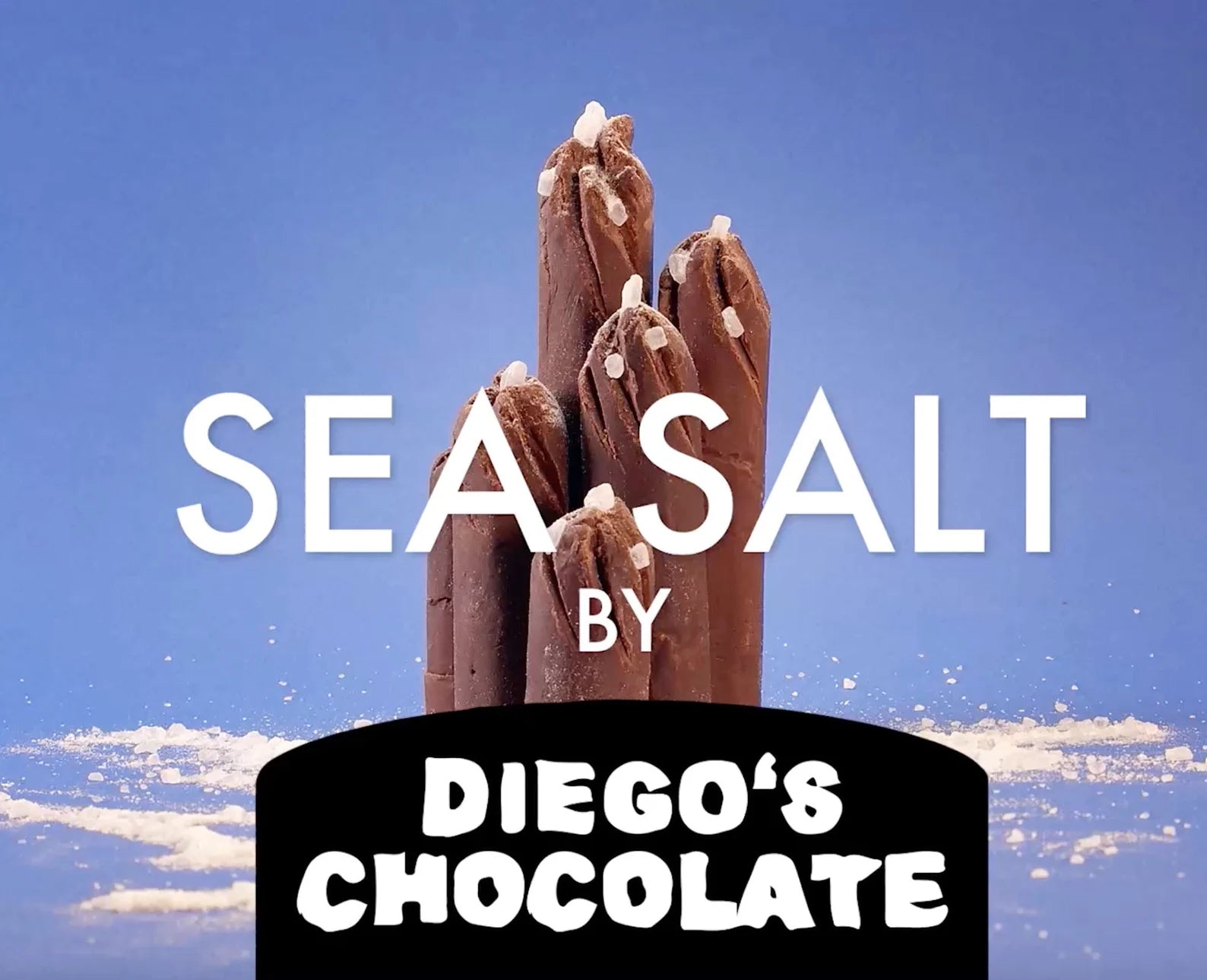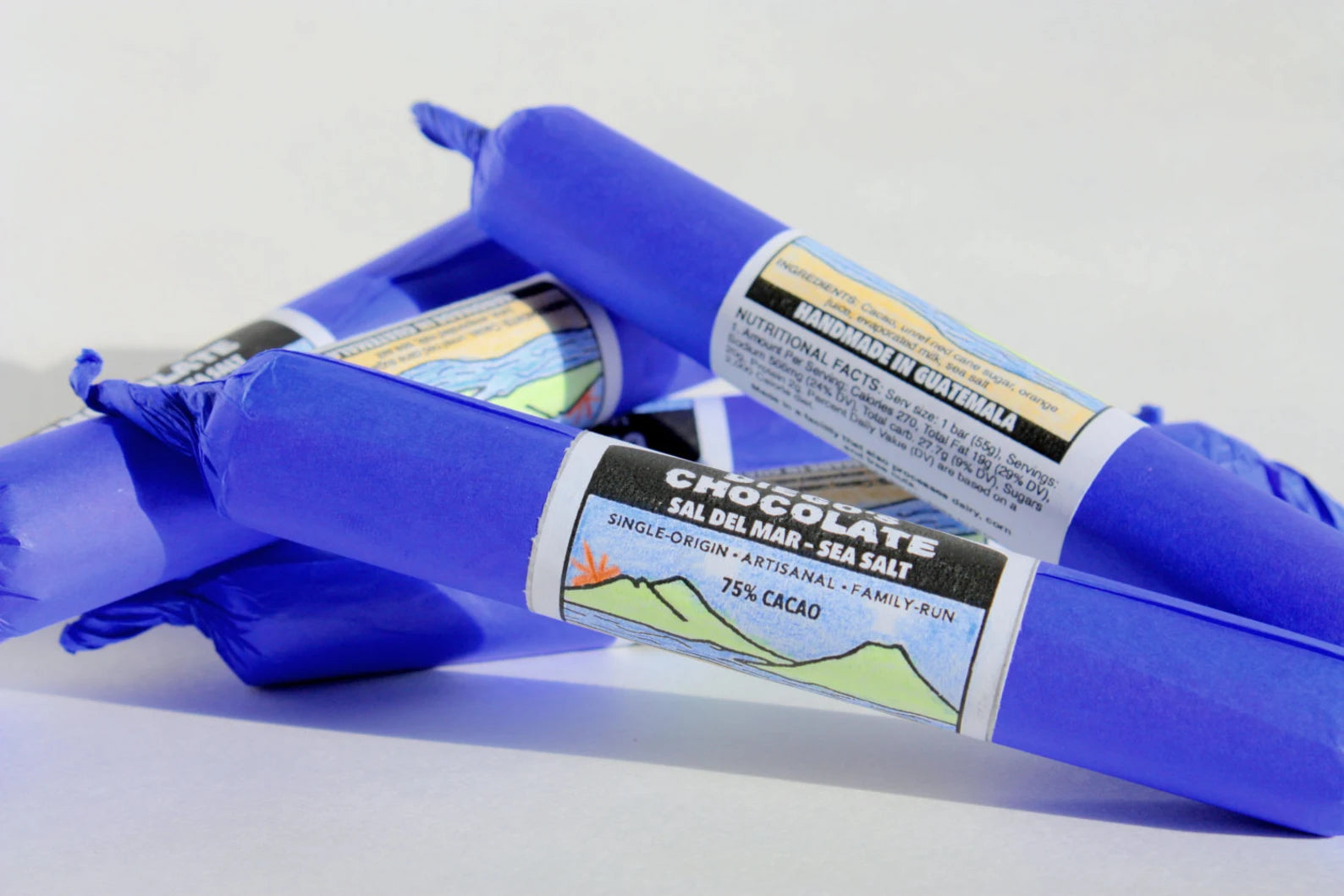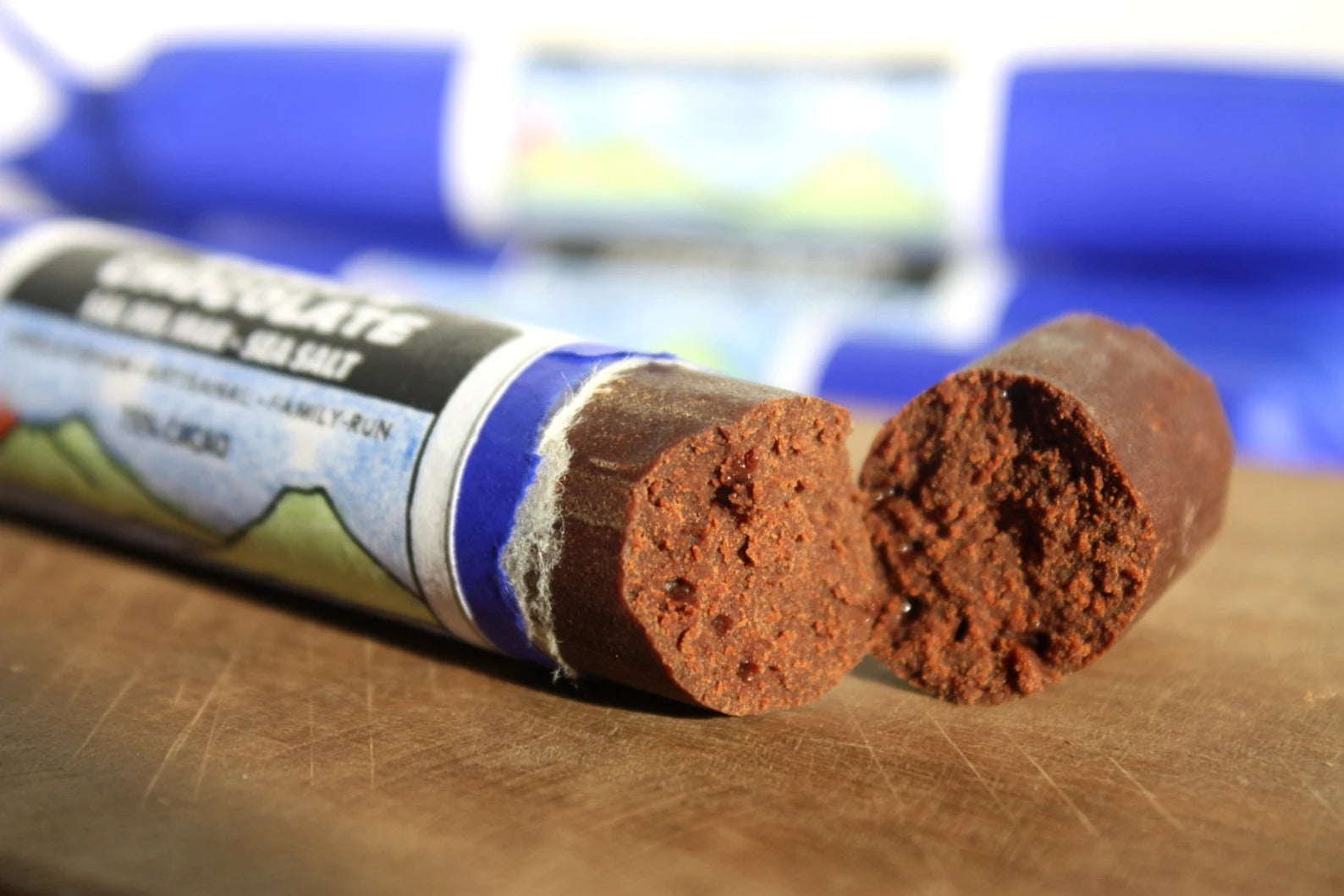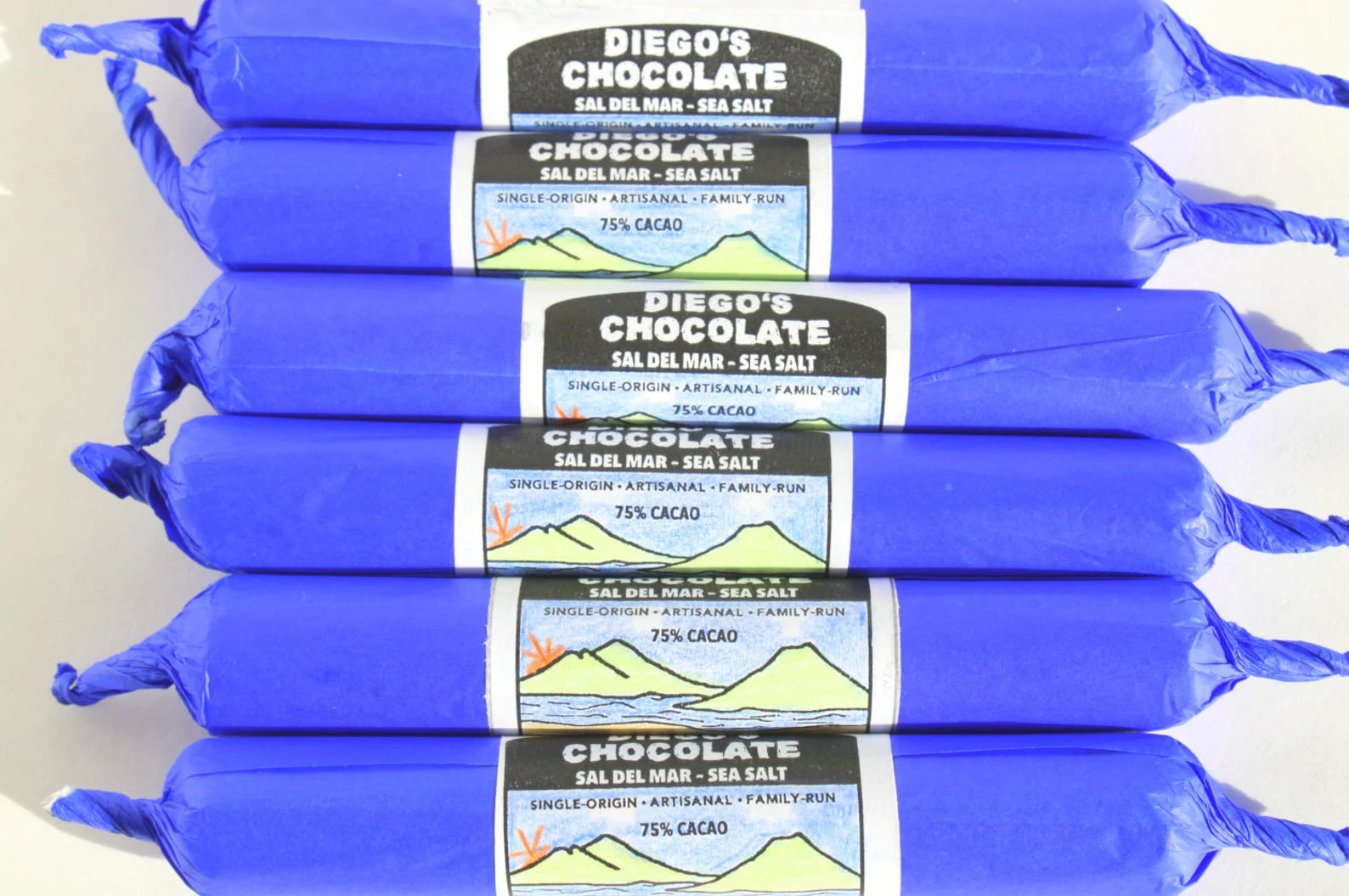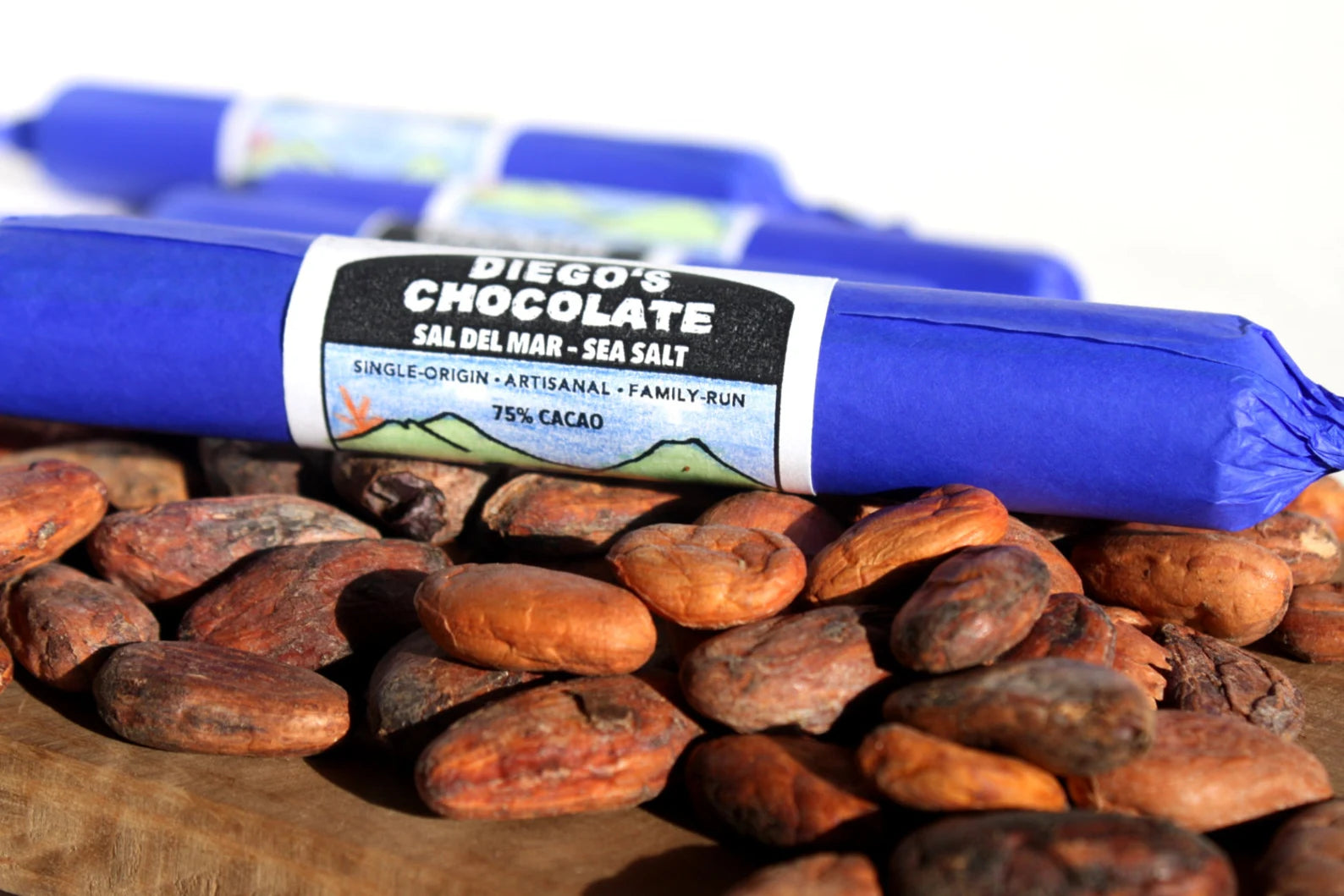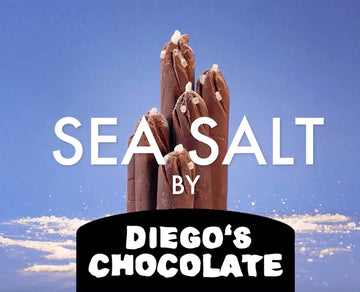Save $15 and get Free Shipping when you choose the 6-Pack Sampler
Sometimes the simplest combinations create the most memorable experiences. Our sea salt chocolate roll perfectly demonstrates this truth, combining signature 75% dark chocolate (some milk) with just the right amount of sea salt to elevate, never overwhelm, the natural flavors of our fire-roasted cacao.
Each chocolate is hand-rolled by Tz'utujil cacao artisans, allowing the salt to distribute evenly throughout every bite. The result is a perfectly balanced chocolate that brings out the best in our carefully sourced Guatemalan cacao.
Made at origin in Guatemala's highlands, these rolls represent our commitment to quality and tradition. Every purchase supports our indigenous artisans and farmers, preserving chocolate-making at origin while protecting the forests where our cacao grows.
Think Outside the Bar
We do things a bit - differently. Find out what makes us so decidedly delectable.
FAQ
How should I store my chocolate rolls and how long will they last?
Our chocolate rolls maintain peak flavor and texture for 6 weeks at room temperature, but can easily last two years when frozen! Use a freezer bag to maintain its flavor.
When you're ready to enjoy, simply take it out of the freezer and wait 15-20 minutes for it to thaw, depending on your ambient temperature. Or just eat them Diego’s frozen! Yes, you can refreeze if needed.
Please note: if you are in a very humid environment and want to maintain the packaging carefully, place the frozen chocolate in the refrigerator for a few hours before removing it to room temperature. This gradual thawing process will reduce the chance of condensation.
What about dietary restrictions and sampling options?
Our chocolate-making facility handles both milk and non-milk products. Each product page clearly indicates whether a roll contains milk. Please note, we do not use gluten, soy, lecithin or artificial additives in our facility. Please note: our chocolate is made in a facility that also processes tree nuts.
We use only certified organic cacao for chocolates sold in the USA. Currently, our chocolates are not certified kosher or halal, though our ingredients and processes align with many dietary requirements.
We do not have samplers or mini versions of our chocolates at this time. Sign up for our email newsletter to find out when they are available.
For specific dietary concerns or questions about sampling, please don't hesitate to contact us directly through our Contact page.
How do you achieve that fudge-like texture?
Diego's Chocolate achieves its distinctive fudge-like texture through a unique approach that bridges traditional Mayan and European chocolate-making. While many craft makers focus on achieving perfect crystallization through careful tempering, Diego's approach embraces a fundamentally different philosophy of chocolate.
Instead of tempering chocolate for snap and shine, Diego combines cacao mass with panela (unrefined cane sugar) and fresh-squeezed orange juice that have been gently cooked together. This special method creates a chocolate that melts more readily on the tongue. Because our chocolate is untempered, we recommend enjoying it within 6 weeks of purchase or storing it in your freezer in a sturdy freezer bag to preserve its exceptional flavor.
In Further Detail
While many craft makers focus on achieving perfect crystallization through careful tempering, Diego's approach embraces a fundamentally different philosophy of chocolate.
The distinctiveness begins with small-batch wood-fire roasting, which creates subtle variances in the beans' moisture content and aromatic compounds. After traditional hand winnowing, the beans undergo a single-stage grinding process that preserves some of the cacao's inherent texture.
What truly sets Diego's chocolate apart is his innovative approach to sugar preparation and moisture inclusion. Where conventional craft chocolate making deliberately avoids moisture (which can cause seizing and microbial concerns), Diego intentionally incorporates fresh-squeezed orange juice as an integral component. This seemingly counterintuitive addition is actually a sophisticated technique that, when properly executed, creates a transformative effect on the chocolate's texture.
The fresh orange juice is gently cooked with unrefined panela sugar, creating a unique preparation that integrates differently with the cacao mass than standard methods. This cooking process fundamentally alters how the sugar interacts with the chocolate. The resulting interaction between cacao and this specially-prepared mixture disrupts typical cocoa butter crystallization patterns. Rather than forming rigid crystal structures that create snap, the fats and sugars create a semi-crystalline matrix that creates a distinctive texture.
This approach represents Diego's ingenious adaptation of his grandmother's traditional Mayan drinking chocolate preparation into a solid, edible form. While traditional Mayan chocolate was primarily consumed as a beverage, Diego has transformed these techniques to create a chocolate that honors indigenous methods while incorporating post-1492 ingredients like panela sugar to create something entirely unique.
When combined with a specific resting period that allows for natural moisture migration and flavor development throughout the mass, the result is a chocolate with a remarkably smooth, fudge-like consistency that melts immediately on the palate. This texture allows for more immediate flavor release and creates an entirely different sensory experience than tempered chocolate.
Given the untempered nature of our chocolate and its traditional moisture content, we recommend consuming it within one month of purchase for optimal flavor experience. For longer storage, place it in your freezer in a sturdy freezer bag to prevent it from absorbing external flavors and to maintain its exceptional qualities.
Diego's approach represents a beautiful evolution of Mayan chocolate traditions. While the Maya traditionally consumed chocolate as a beverage, Diego has transformed his grandmother's drinking chocolate preparation into a solid form that can be packaged and shared. His chocolate offers a rare opportunity to experience the intersection of indigenous techniques and post-colonial ingredients, delivering an authentic expression of Guatemala's evolving chocolate heritage with technical precision.
What is the difference between cacao and cocoa
There's a lot of confusion about the difference between cacao and cocoa!
While some use "cacao" for less processed products and "cocoa" for more processed ones, the origin is linguistic. "Cacao" is a Spanish word derived from the Nahuatl (Aztec/Mayan-era language) word kakawa.
"Cocoa" is the English version. At Diego's Chocolate, we find it clearer to use descriptive terms like "raw cacao," "fermented cacao," or "roasted cacao" to tell you exactly what you're getting.
So, when you see cacao vs cocoa, think about the full description, not just the name.
Can I use your 100% Cacao Block to make cacao coffee or a mocha?
Absolutely! Our 100% Cacao Block is ideal for making delicious cacao coffee.
Just shave or chop a small amount (start with 1-2 teaspoons per cup) and melt it into your hot brewed coffee.
It creates a rich, unsweetened chocolate flavor perfect for a homemade mocha.
What's the best way to add your cacao to coffee?
For the best cacao coffee, we recommend adding finely shaved or chopped pieces of our 100% Cacao Block directly to your mug, then pouring hot coffee over it and stirring well.
This ensures it melts smoothly and you can control the intensity.
